Abstract
OBJECTIVE: To describe the use of infrared (IR) ear thermometers in pediatric and family practice offices. METHODS: The authors mailed a questionnaire to 350 randomly selected members of the American Academy of Pediatrics and to 355 randomly selected members of the American Academy of Family Physicians. RESULTS: Of respondents in clinical practice, 78% had used IR ear thermometers at least once in the past; 65% of pediatricians and 64% of family practice physicians were current users. Seventeen percent of pediatric offices and 18% of family practice offices that had used IR ear thermometers had discontinued use, most citing inaccuracy or lack of staff trust in the device. Pediatric offices were less likely than family practice offices to use the device in well neonates and sick neonates and more likely to use it in sick children. Advantages cited included rapid readings, ease of use, and accuracy. Seventy-five percent of current users reported at least one problem, including low readings and lack of staff trust. CONCLUSIONS: IR ear thermometers are widely used in pediatric and family practice offices. Some offices limit use of these devices to older children and adults, and most of the offices surveyed report using other devices as a check on the accuracy of IR thermometers. Statements by professional organizations that provide user guidelines and establish appropriate age cut-offs would be helpful.
Full text
PDF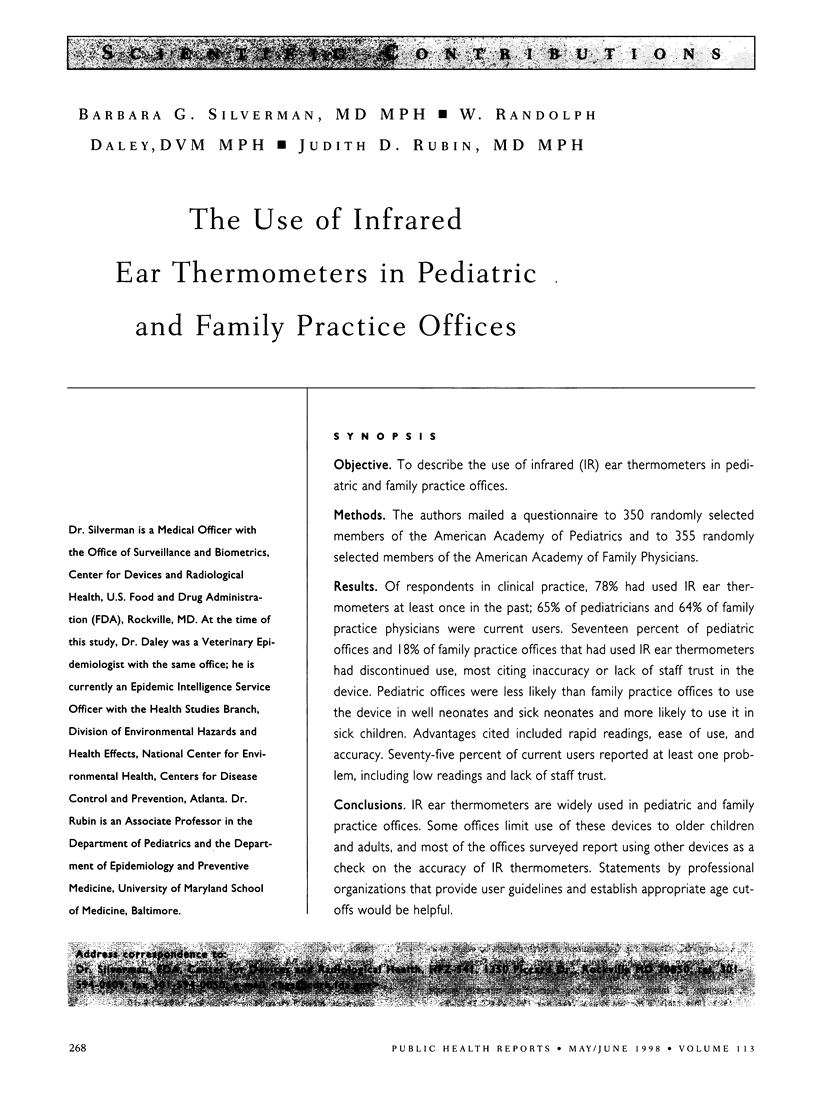
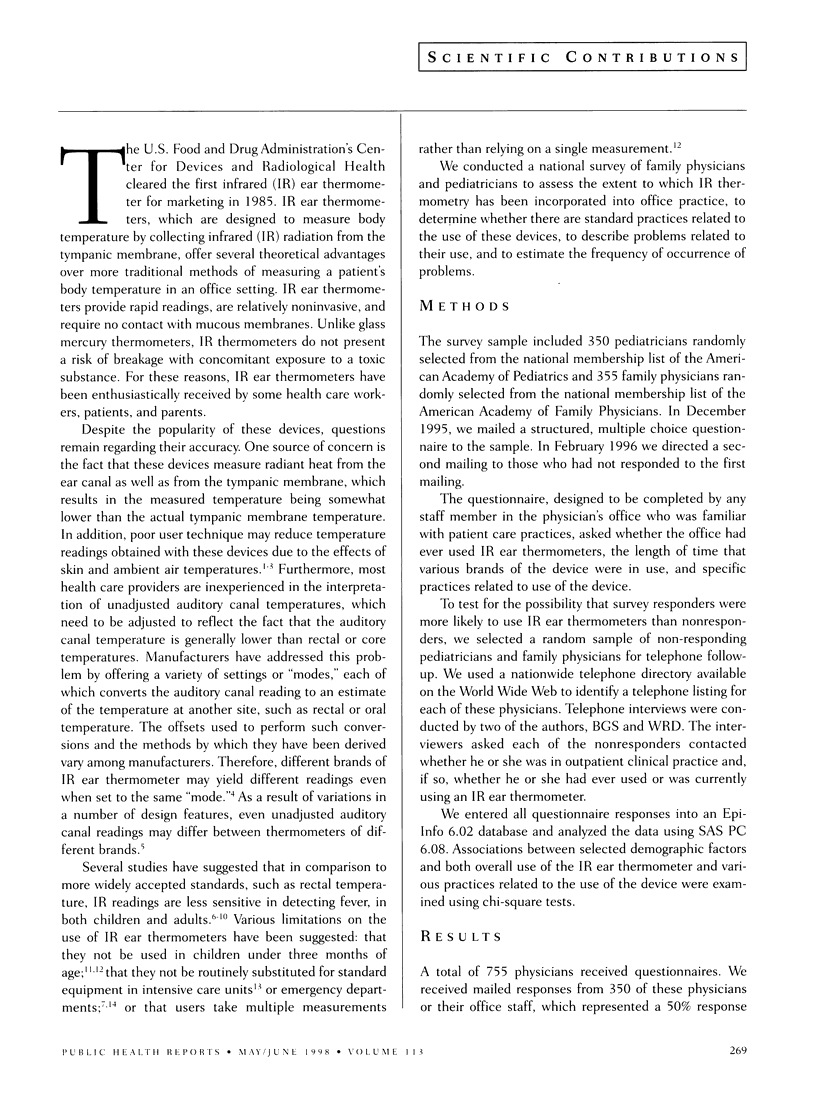
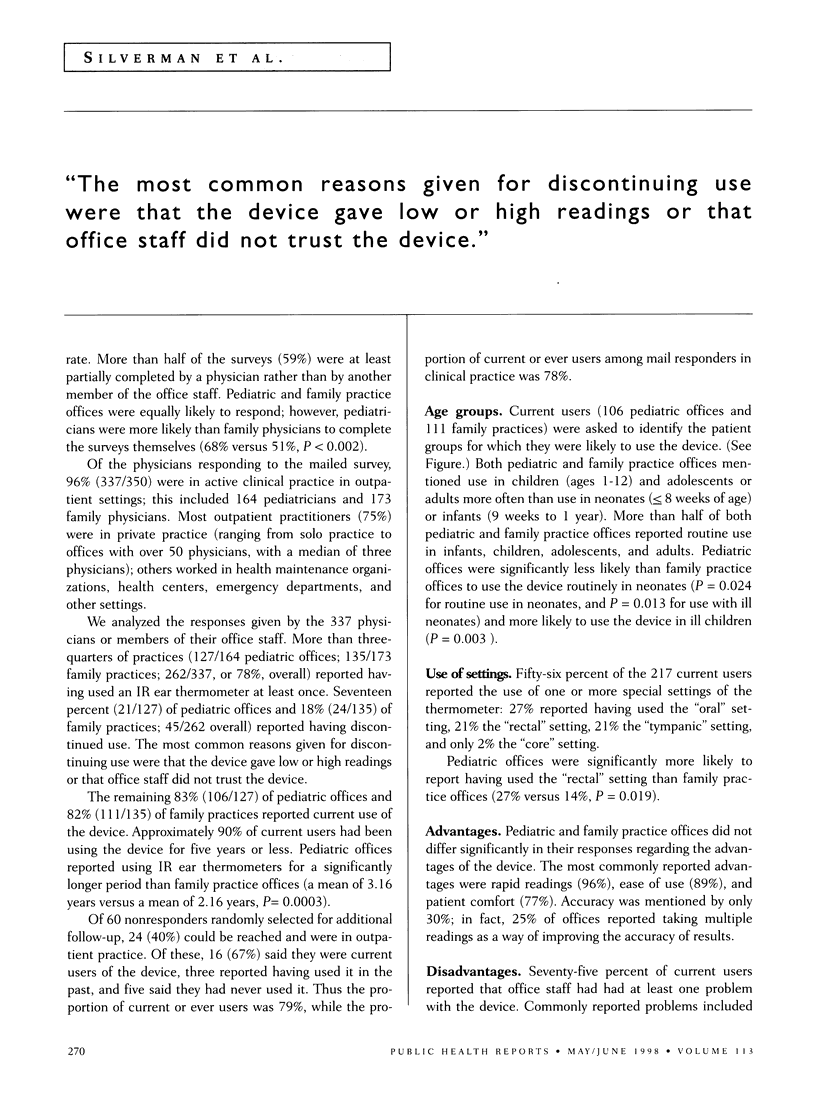
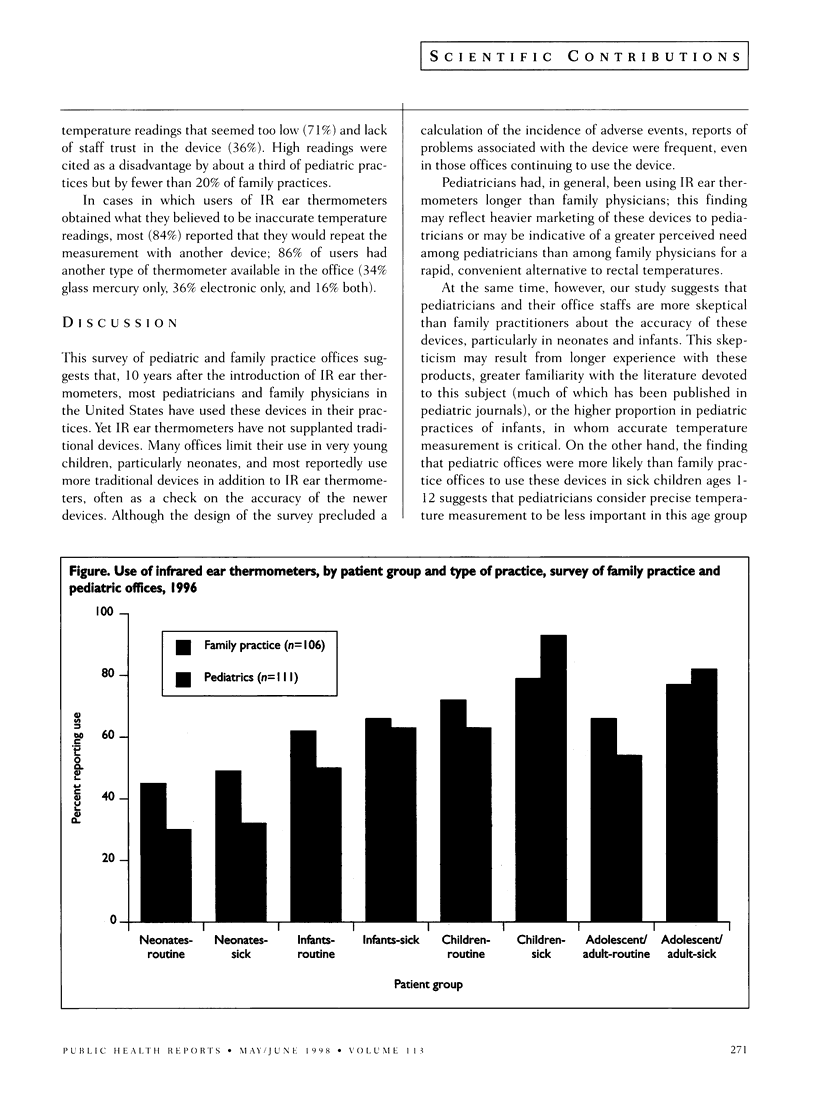
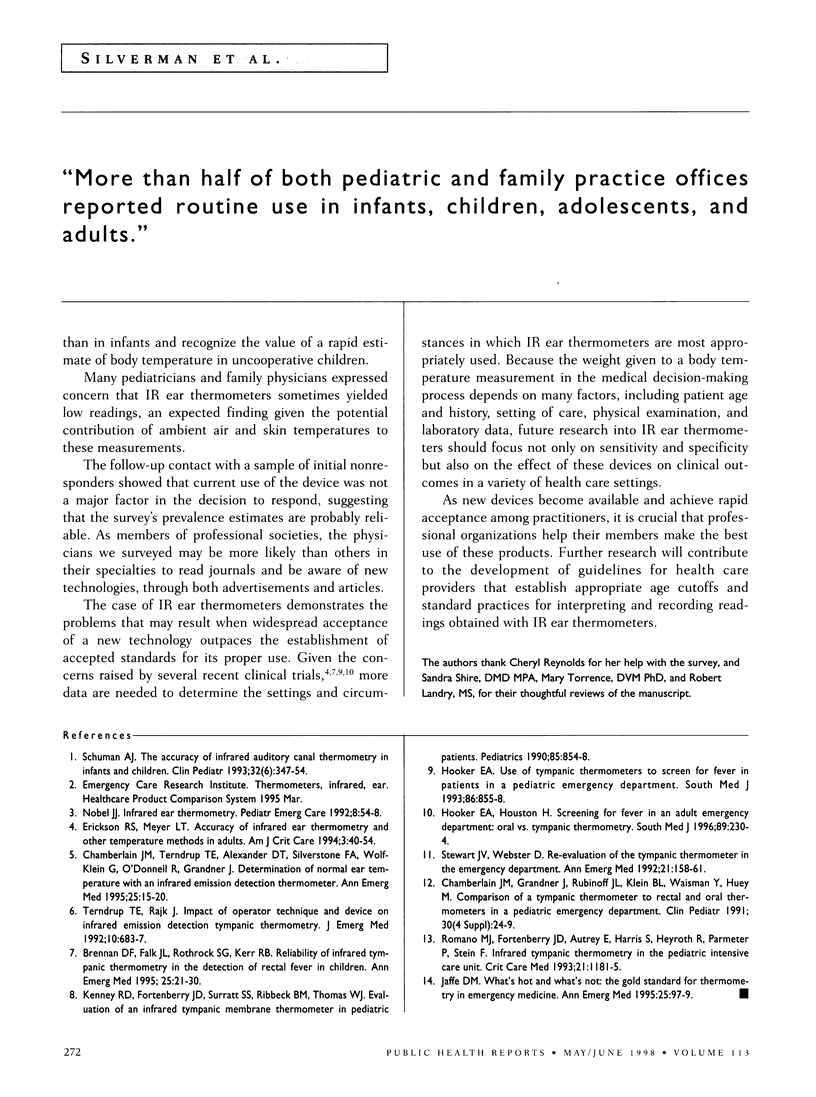
Selected References
These references are in PubMed. This may not be the complete list of references from this article.
- Brennan D. F., Falk J. L., Rothrock S. G., Kerr R. B. Reliability of infrared tympanic thermometry in the detection of rectal fever in children. Ann Emerg Med. 1995 Jan;25(1):21–30. doi: 10.1016/s0196-0644(95)70350-0. [DOI] [PubMed] [Google Scholar]
- Chamberlain J. M., Grandner J., Rubinoff J. L., Klein B. L., Waisman Y., Huey M. Comparison of a tympanic thermometer to rectal and oral thermometers in a pediatric emergency department. Clin Pediatr (Phila) 1991 Apr;30(4 Suppl):24–35. doi: 10.1177/0009922891030004S08. [DOI] [PubMed] [Google Scholar]
- Chamberlain J. M., Terndrup T. E., Alexander D. T., Silverstone F. A., Wolf-Klein G., O'Donnell R., Grandner J. Determination of normal ear temperature with an infrared emission detection thermometer. Ann Emerg Med. 1995 Jan;25(1):15–20. doi: 10.1016/s0196-0644(95)70349-7. [DOI] [PubMed] [Google Scholar]
- Erickson R. S., Meyer L. T. Accuracy of infrared ear thermometry and other temperature methods in adults. Am J Crit Care. 1994 Jan;3(1):40–54. [PubMed] [Google Scholar]
- Hooker E. A., Houston H. Screening for fever in an adult emergency department: oral vs tympanic thermometry. South Med J. 1996 Feb;89(2):230–234. doi: 10.1097/00007611-199602000-00016. [DOI] [PubMed] [Google Scholar]
- Kenney R. D., Fortenberry J. D., Surratt S. S., Ribbeck B. M., Thomas W. J. Evaluation of an infrared tympanic membrane thermometer in pediatric patients. Pediatrics. 1990 May;85(5):854–858. [PubMed] [Google Scholar]
- Nobel J. J. Infrared ear thermometry. Pediatr Emerg Care. 1992 Feb;8(1):54–58. doi: 10.1097/00006565-199202000-00016. [DOI] [PubMed] [Google Scholar]
- Schuman A. J. The accuracy of infrared auditory canal thermometry in infants and children. Clin Pediatr (Phila) 1993 Jun;32(6):347–354. doi: 10.1177/000992289303200605. [DOI] [PubMed] [Google Scholar]
- Stewart J. V., Webster D. Re-evaluation of the tympanic thermometer in the emergency department. Ann Emerg Med. 1992 Feb;21(2):158–161. doi: 10.1016/s0196-0644(05)80151-9. [DOI] [PubMed] [Google Scholar]
- Terndrup T. E., Rajk J. Impact of operator technique and device on infrared emission detection tympanic thermometry. J Emerg Med. 1992 Nov-Dec;10(6):683–687. doi: 10.1016/0736-4679(92)90525-x. [DOI] [PubMed] [Google Scholar]


